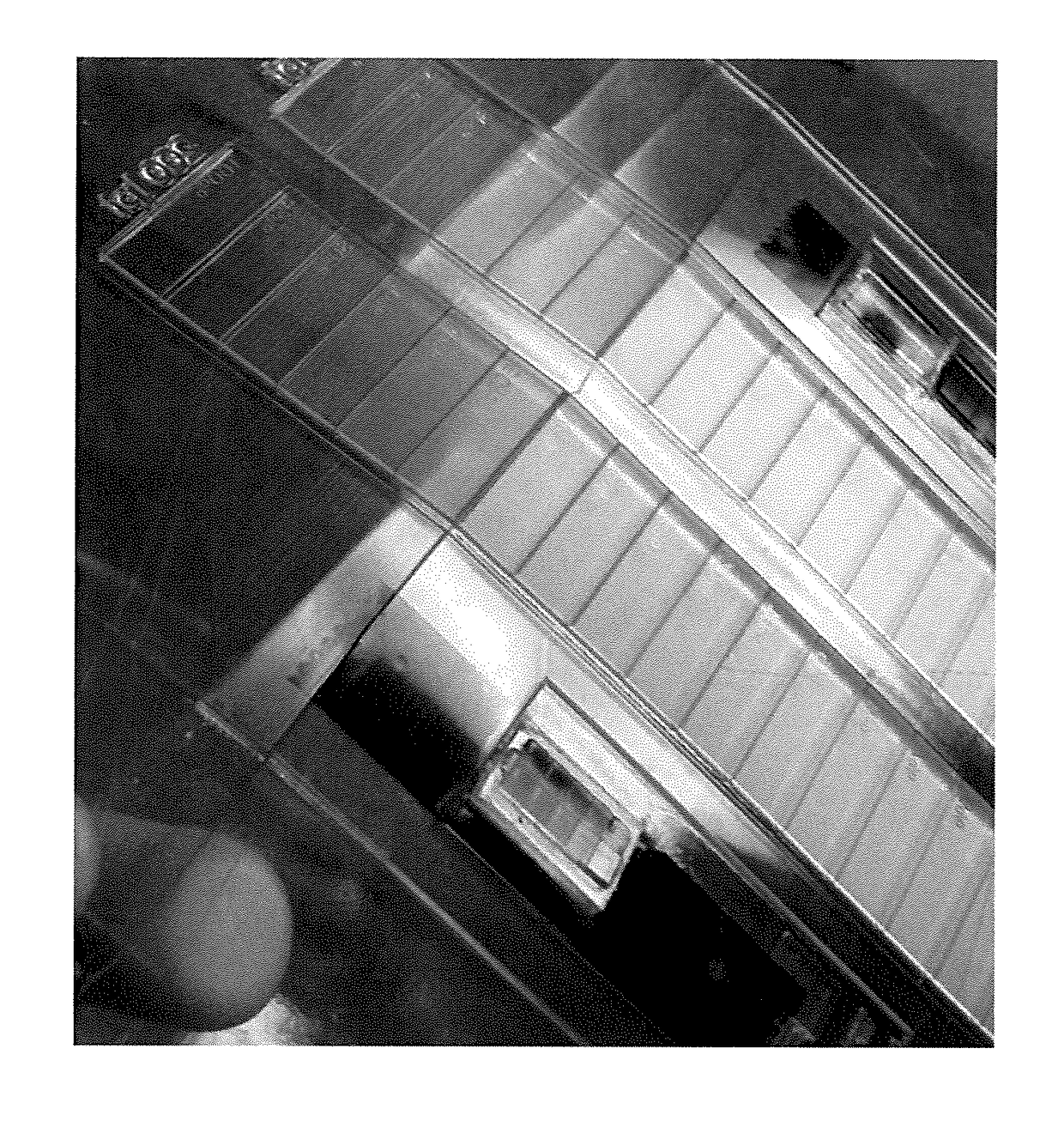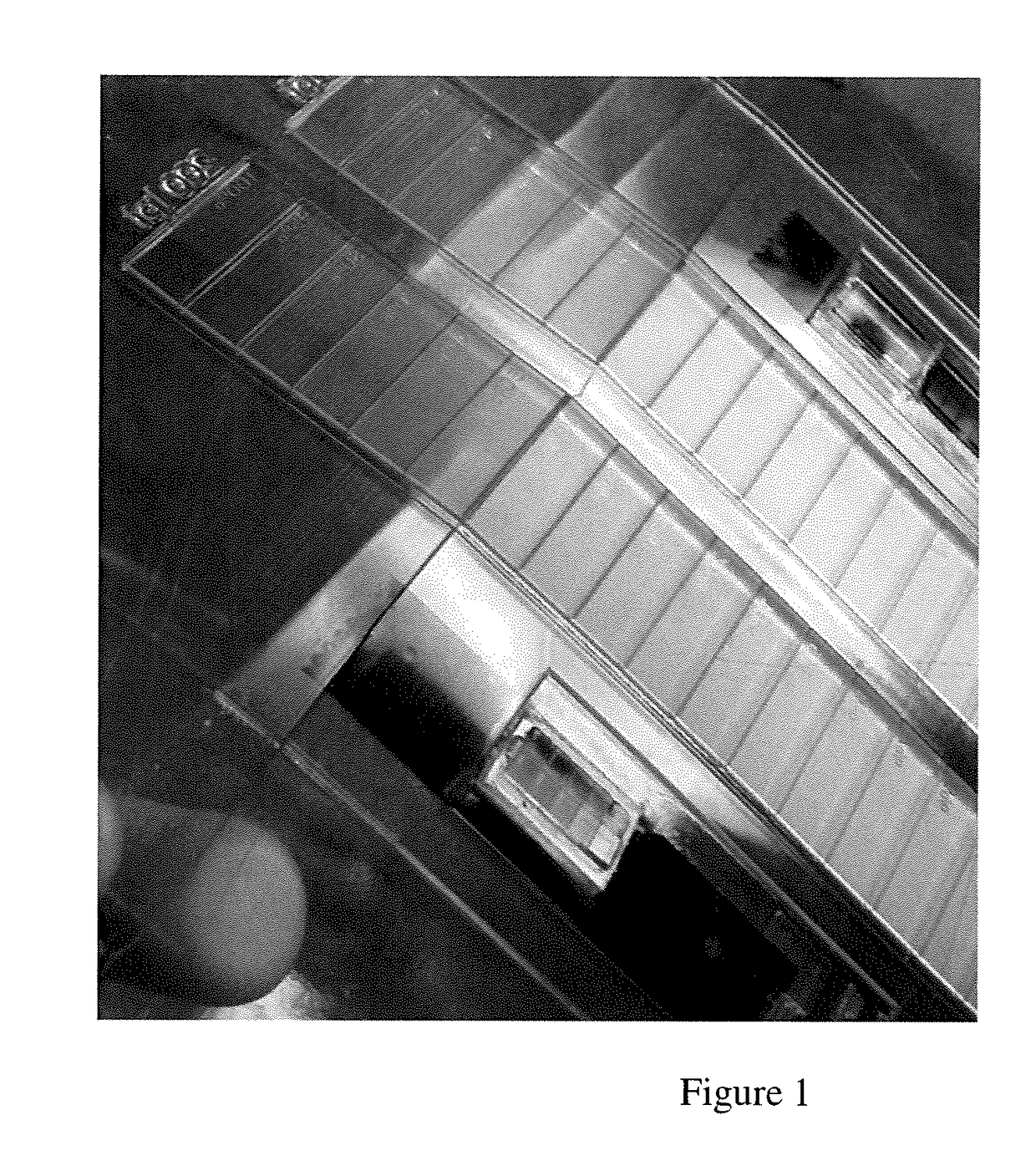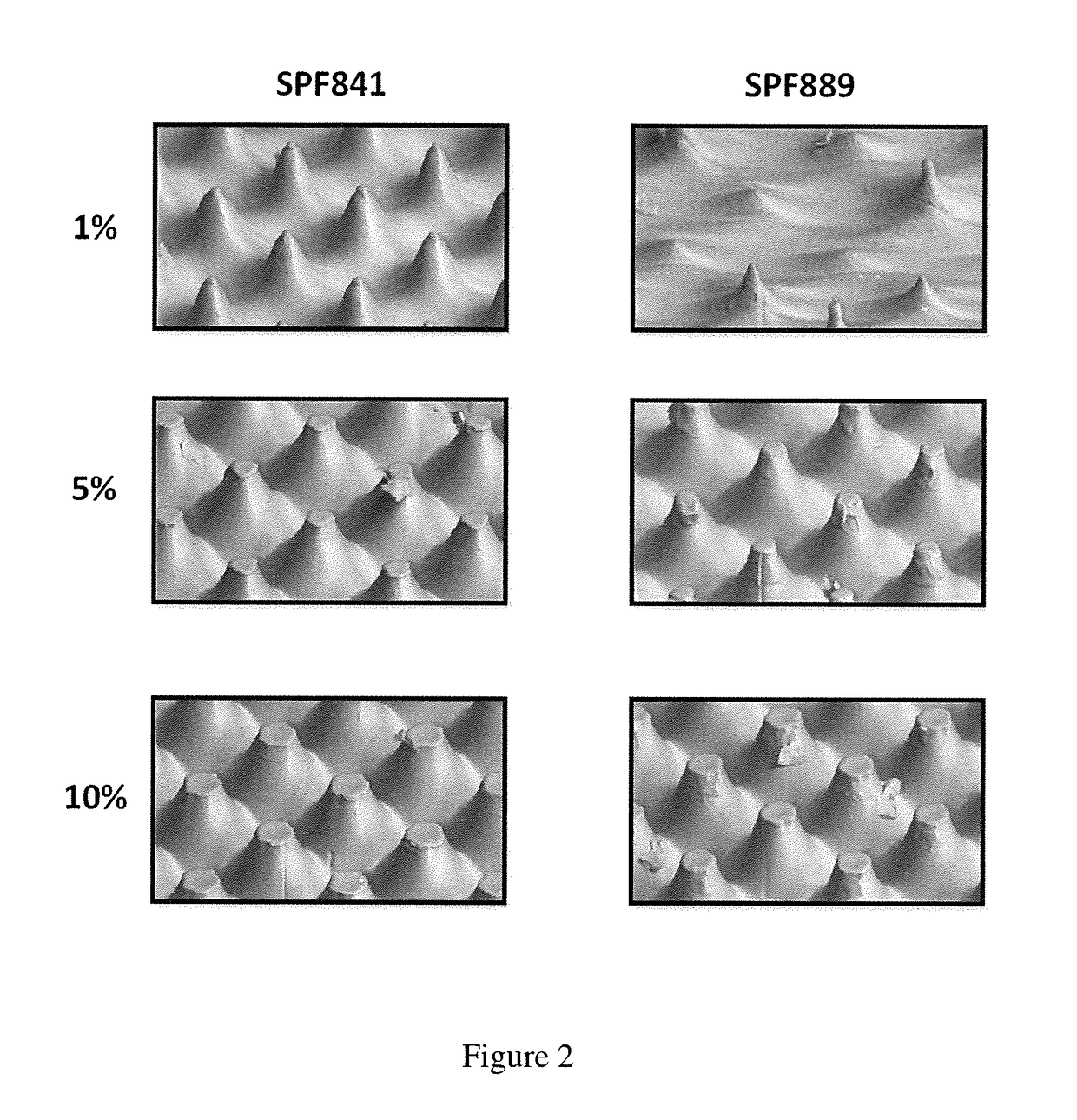Method of improving light stability of flexographic printing plates featuring flat top dots
a technology of flat top dots and printing plates, applied in the field of digital relief image printing elements, can solve the problems of difficult to maintain small dots on flexographic printing plates, difficult to print small graphic elements such as fine dots, lines and even text, and easy damage to the press, so as to improve surface cure
- Summary
- Abstract
- Description
- Claims
- Application Information
AI Technical Summary
Benefits of technology
Problems solved by technology
Method used
Image
Examples
Embodiment Construction
[0050]The present invention is directed to an improved photocurable composition that improves light stability of fully-processed inherent FTD photoresins without resorting to conventional antioxidants that tend to compromise imaging features. The benefit of the improved photocurable composition of the present invention is comparable plate-handling and storage characteristics of inherent FTD plates to those of conventional plate formulations without compromising the technical superiority of the inherent FTD photoresins.
[0051]Due to the unique nature of the inherent FTD photoresins, fully processed plates tend to exhibit poor light stability. As a result, the inherent FTD plates typically require stricter plate-handling protocols for storage in order to fully realize the technical benefits of inherent FTD plates. The inventors of the present invention have discovered that the use of a component comprising amine moieties in the photocurable composition can improve light stability of th...
PUM
| Property | Measurement | Unit |
|---|---|---|
| time | aaaaa | aaaaa |
| wavelength | aaaaa | aaaaa |
| photocurable | aaaaa | aaaaa |
Abstract
Description
Claims
Application Information
 Login to View More
Login to View More - R&D
- Intellectual Property
- Life Sciences
- Materials
- Tech Scout
- Unparalleled Data Quality
- Higher Quality Content
- 60% Fewer Hallucinations
Browse by: Latest US Patents, China's latest patents, Technical Efficacy Thesaurus, Application Domain, Technology Topic, Popular Technical Reports.
© 2025 PatSnap. All rights reserved.Legal|Privacy policy|Modern Slavery Act Transparency Statement|Sitemap|About US| Contact US: help@patsnap.com



